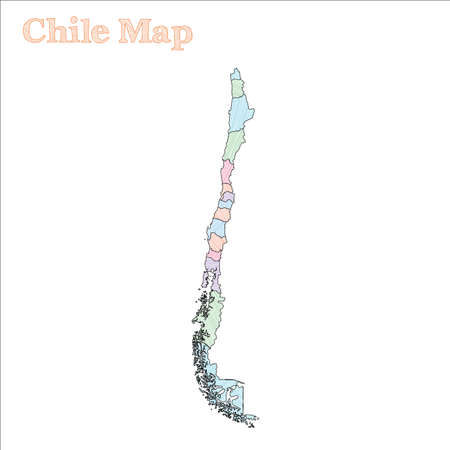1. Understanding the Essentials of Compass Navigation
When it comes to backcountry travel in America, mastering compass navigation isn’t just a nod to tradition—it’s a critical survival skill. Whether you’re trekking through the dense forests of the Pacific Northwest, navigating the vast open deserts of the Southwest, or tackling the rugged Appalachians, knowing how to use a compass can mean the difference between getting home safe and becoming another cautionary tale.
Types of Compasses Used by American Outdoorsmen
American hikers, hunters, and outdoor enthusiasts typically rely on two main types of compasses: the baseplate (or orienteering) compass and the lensatic (military-style) compass. The baseplate compass is favored for its simplicity, transparency, and easy map alignment—ideal for civilian navigation and most backcountry needs. The lensatic compass, meanwhile, is built tough for rough handling and precise bearings, making it popular among military personnel and hardcore adventurers alike. Each has its place depending on your route planning and personal preference.
How to Read a Compass: The Basics
Reading a compass starts with understanding its anatomy: the magnetic needle, orienting arrow, degree dial, and direction-of-travel arrow. To find your heading, hold the compass flat in your hand at waist level, let the needle settle, and rotate the dial so that “N” lines up with north. Your bearing is then read at the index line—a simple act that keeps you on course when GPS fails or batteries die.
Why Map-and-Compass Skills Are Vital for American Backcountry Travelers
Despite advances in digital navigation tools, seasoned American outdoorsmen know technology can fail at the worst times—batteries run out, signals drop, screens crack. That’s why map-and-compass skills remain non-negotiable for safe travel off-grid. These analog skills aren’t just old-school; they’re proven lifelines when you’re miles from help in America’s wild places. By combining a reliable compass with topographic maps, you can plan routes that avoid hazards, conserve energy, and get you back to civilization—even if modern tech lets you down.
2. Pre-Trip Planning: Mapping Your Safe Passage
Before you even lace up your boots, the backbone of any successful compass-based backcountry itinerary in America is rigorous pre-trip planning. This step separates the weekend wanderer from the true survivor. Lets break down how to select trusted US topographic maps, gather reliable waypoints, and design a route that respects both your skillset and the unpredictable realities of American wilderness terrain.
Selecting Trusted Topographic Maps
In the United States, not all maps are created equal. For hardcore navigation, rely on USGS Topo Maps, available both in print and digital formats. These maps give you critical contour lines, elevation data, water sources, and man-made features like old logging roads or cabins—details GPS sometimes misses when batteries die or signals drop.
| Map Source | Coverage | Reliability |
|---|---|---|
| USGS Topo (print/digital) | Nationwide | Gold Standard – Updated regularly |
| National Geographic Trails Illustrated | Parks & major wilderness areas | Excellent for recreation routes |
| Forest Service Visitor Maps | National Forests | Detailed for motorized/non-motorized travel |
| OnX/CalTopo (digital) | User-selected overlays | Highly customizable for off-trail use |
Gathering Reliable Waypoints
Your compass is only as useful as your reference points. Gather waypoints from reputable sources such as NPS trailhead markers, ranger stations, and recent trip reports on American hiking forums like Backpacker.com or AllTrails. Mark key locations: trailheads, water sources (which may dry up seasonally), emergency bail-out points, and natural hazards like river crossings or avalanche chutes. If possible, validate these with satellite imagery before heading out.
Key Waypoint Types to Consider:
- Start/End Points: Parking lots, remote trailheads
- Shelter Locations: Backcountry campsites, ranger cabins, lean-tos
- Critical Water Sources: Springs, lakes, rivers (check recent drought/fire updates)
- Difficult Terrain Features: Ridge passes, scree fields, swampy areas
- Bail-Out Routes: Secondary trails leading back to civilization or safety zones
Create a Route with Hazards in Mind
The American wilderness throws curveballs—steep Rockies scree fields, flash floods in Utah canyons, bear corridors in the Sierra Nevada. Your route plan must anticipate these hazards by integrating both map data and historical local knowledge. Overlay your planned route with known risk zones (e.g., avalanche paths marked by USFS), seasonal wildlife activity charts from Fish & Wildlife agencies, and recent weather patterns.
| Region | Main Hazards to Plan For |
|---|---|
| Northern Rockies | Avalanches (winter/spring), Grizzly bear activity (late spring-fall) |
| Sierra Nevada High Country | Scree slopes, snowfields (until July), fast-moving streams during melt-off |
| Canyonlands/Southwest Deserts | Flash floods (monsoon season), dehydration risks year-round |
| Pine Barrens/Appalachians | Ticks/Lyme disease hot zones (spring-fall), dense undergrowth navigation challenges |
Tactical Tip:
If your planned route intersects high-risk zones—like deep canyons prone to flash flooding or grizzly territory—always build alternate routes into your plan using secondary waypoints. Print your maps and double-bag them against wet weather; never rely solely on electronics.

3. On-the-Ground Techniques for Route Adjustment
When you’re deep in the American backcountry, route planning doesn’t end with your initial compass bearing. Real survival depends on dynamic navigation—adjusting your plan on the fly as the terrain, weather, and unexpected obstacles challenge your progress. Here’s how to sharpen your compass-based route adjustment skills to keep yourself safe and oriented.
Reading Compass Bearings in Real Time
Your compass is more than a backup—it’s the cornerstone of precision in wild terrain. As you move, regularly check your bearing against landmarks, correcting for any drift caused by natural detours. In dense Appalachian forests or broad Western valleys, pace counts alone won’t cut it; use your compass to “box around” impassable features like rivers or steep canyons, always recalculating your heading from known points.
Leveraging Landscape Features
America’s landscapes offer critical clues: ridgelines in the Rockies, watercourses in the Ozarks, or firebreaks in California’s chaparral. Use these features as handrails—natural guides that parallel or cross-check your intended route. When visibility drops (think Pacific Northwest fog or sudden High Plains storms), fall back on terrain association: match what you see to what’s on your map and use prominent features like rock outcrops or lone cottonwoods to confirm position.
Environmental Cues Unique to America
Recognize patterns unique to the U.S.—such as following old logging roads in New England, using fence lines across the Midwest, or tracking sun position relative to cardinal directions during long desert crossings. Seasonal changes matter too: snowpack alters recognizable routes, while summer overgrowth can obscure trails entirely. Stay alert for wildlife trails; in bear country, these often lead toward water but may not go where you want.
Developing Adaptive Navigation Habits
Practice frequent micro-adjustments. Pause at each decision point: does your environment match your map and compass reading? If not, stop and reassess before pushing further into uncertainty. In American backcountry travel, stubbornly sticking to a faulty bearing has led too many off-grid rescues—flexibility and situational awareness save lives.
Staying on Track Under Pressure
Fatigue and stress erode navigation discipline fast. Make it habit to check bearings after every rest break and before descending into valleys or thick timber. Teach your group simple call-and-response checks (“Bearing?” “270 west!”) so everyone stays engaged. Whether you’re solo on the Continental Divide Trail or guiding friends through Utah canyonlands, real-time compass work is non-negotiable for survival-grade backcountry travel.
4. Safety Protocols: Building Escape and Bailout Plans
Even the toughest backcountry navigator knows that no plan survives first contact with the wild. When plotting routes with a compass in America’s vast wilderness, your safety depends on more than just your intended path—it hinges on your ability to adapt, reroute, and evacuate under pressure. Integrating robust escape and bailout strategies into your itinerary is not optional; it’s essential. Here’s how you can align your route planning with US search-and-rescue (SAR) best practices, stacking the odds in your favor when things go sideways.
Mapping Alternate Routes: Redundancy is Survival
A solid backcountry itinerary doesn’t just outline your primary route; it charts multiple exit ramps for every section of your journey. Identify terrain features like rivers, ridgelines, or established forest roads that can serve as handrails or escape corridors if your main path becomes impassable. Always consider seasonal hazards—like wildfire zones out West or flash flood-prone canyons in the Southwest—and plot detours accordingly.
Table 1: Sample Alternate Route Considerations
| Main Terrain Feature | Alternate Route Trigger | Bailout Direction | Landmark/Handrail |
|---|---|---|---|
| Mountain Ridge | Sudden Weather Change | Descend North Slope | Stream Valley (marked on map) |
| Canyon Trail | Rising Water Levels | Ascend East Wall Spur Trail | Saddle Rock Outcrop (visible waypoint) |
| Pine Forest Traverse | Wildfire Smoke Detected | Move West to Firebreak Road | Old Logging Road (on USGS quad) |
Evacuation Strategies: Communicating Your Plan
Before heading out, document all alternate routes and bailouts in your trip plan. Share this info with a reliable contact back home—the classic “leave a copy” rule still applies. Include estimated timeframes for each segment and potential emergency exit points, using GPS coordinates or clear map references whenever possible.
US Search-and-Rescue Best Practices Checklist
- Redundant Navigation: Carry both paper topo maps and a compass; supplement with a GPS device but don’t rely solely on electronics.
- Bailout Waypoints: Pre-select safe zones (trailheads, ranger stations, road crossings) as rally points if extraction is needed.
- Signal Plan: Specify check-in times via satellite messenger or cell coverage spots; agree on overdue protocols with your contact.
- Group Protocols: Review escape plans with all group members before departure—everyone should know the plan cold.
- SAR Coordination: Include details about alternate routes in any pre-trip notification filed with local authorities or park rangers.
The Takeaway: Flexibility Saves Lives
A successful compass-based route plan in America’s wildlands is never rigid. By anticipating failure points and pre-planning multiple escape options—backed by SAR-savvy documentation—you maximize both personal safety and rescue success odds. In the unforgiving American backcountry, adaptability isn’t just an asset; it’s survival protocol.
5. Integrating Modern Tools With Traditional Compass Skills
In the American backcountry, staying safe means leveraging every tool at your disposal—without ever relying on just one. While a compass and map are your core survival assets, GPS devices and mobile mapping apps have become standard issue for serious trekkers. The key to resilient route planning is knowing when and how to blend these technologies with old-school navigation skills.
When to Deploy GPS and Mobile Apps
American wilderness environments—whether the dense forests of the Pacific Northwest or the open ranges of the Rockies—can challenge even seasoned navigators. Use GPS units or smartphone apps for pinpoint location checks during whiteout conditions, after dark, or when terrain features don’t match your expectations. But remember: batteries die, screens crack, and signals drop. Always confirm digital readings with your compass bearings and physical map orientation before changing course.
Layering Navigation Methods for Redundancy
The gold standard in US backcountry resilience is redundancy. Plot your intended route using traditional compass-based bearings first, then program critical waypoints into your GPS. Cross-reference your position periodically; if digital tools fail, you’ll have pre-identified landmarks and azimuths to fall back on. This layered approach is essential in remote zones like Alaska’s tundra or Utah’s canyon country, where help is hours—or days—away.
Practical Integration Tips for American Terrain
Never let technology lull you into complacency. In national parks from Yosemite to Acadia, practice triangulating your position with a compass even when your phone has service. Mark “escape routes” and emergency shelters both digitally and on paper maps. If traveling in a group, designate roles: one person tracks progress on an app while another logs compass headings. This cross-check ensures nobody blindly follows a device off-trail—a leading cause of search-and-rescue calls in US wilderness areas.
By fusing modern tools with proven compass techniques, you build real-world resilience for America’s wild spaces—where self-reliance is the difference between a close call and a rescue headline.
6. Case Study: Crafting a Safe Multi-Day Backcountry Trek in America
Scenario: Planning a Three-Day Route in the White Mountains, New Hampshire
The White Mountains of New Hampshire are legendary for their unpredictable weather, rugged terrain, and remote backcountry trails. Let’s walk through a sample three-day trek from the Appalachia Trailhead to Mount Madison, using compass-based planning to maximize safety and decision-making.
Day 1: Trailhead to Valley Campsite
You start at the Appalachia Trailhead with your topographic map and reliable compass. Your initial bearing is set to follow the Valley Way Trail, heading roughly northeast (bearing 045°). Early on, you encounter an unmarked fork—your map indicates that the true trail should trend north-northeast. Using your compass, you confirm the correct path, avoiding a common mistake that could lead to hours lost in dense forest. First safety checkpoint: Every hour, you stop, mark your position on the map, and confirm you’re on bearing.
Day 2: Ascent to Mount Madison
Morning brings fog and low visibility—a classic White Mountains scenario. Here’s where hard skills matter. With GPS unreliable under tree cover, you trust your compass. From camp, orient your map to magnetic north, then plot a bearing due east (090°) to intersect with the Osgood Trail junction. At each trail junction or stream crossing (key safety checkpoints), re-confirm your position by triangulating with identifiable landmarks like prominent ridgelines or river bends visible between clouds.
Day 3: Ridge Traverse and Exit
The final day means traversing Madison’s exposed ridge. Wind picks up; clouds roll in fast—classic hypothermia territory if you’re not sharp. You use your compass to maintain a steady south-southwest bearing (210°) along the Gulfside Trail toward your planned descent. Safety protocol: If visibility drops below 50 feet or you lose sight of cairns for more than 10 minutes, halt and re-orient before proceeding. Set “hard” turnaround times based on daylight and current location—don’t gamble with mountain weather.
Takeaways: Compass Skills Save Lives
This mock itinerary highlights why American backcountry trekkers need real-world compass navigation chops—not just digital crutches. By making deliberate decisions at every fork, checkpoint, and hazard using traditional tools and local terrain knowledge, you dramatically reduce risk. In America’s vast wilds—where cell signals die and weather turns savage—hardcore compass work isn’t just old-school; it’s survival doctrine.


